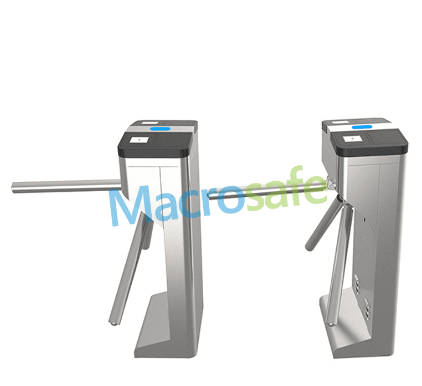Ticket turnstiles serve as more than just entry points to venues; they can play a vital role in optimizing ticket sales and pricing strategies. By integrating ticket turnstiles with revenue management systems, venues can gather valuable data, monitor ticket sales in real-time, and implement dynamic pricing models. In this article, we will explore the benefits of integrating ticket turnstiles with revenue management systems and how it can optimize ticket sales and pricing strategies.
1. Real-time Ticket Sales Monitoring
Integrating ticket turnstiles with revenue management systems enables venues to monitor ticket sales in real-time. This functionality allows for continuous tracking of ticket inventory levels, providing accurate information on ticket availability and demand. Real-time monitoring helps venues identify trends, adjust pricing strategies, and optimize inventory allocation, ensuring maximum ticket sales and minimizing the risk of overbooking or underutilizing capacity.
2. Dynamic Pricing
Integrating ticket turnstiles with revenue management systems facilitates the implementation of dynamic pricing strategies. By analyzing ticket sales data, demand patterns, and market conditions, venues can adjust ticket prices dynamically to match demand fluctuations. Dynamic pricing allows for the optimization of revenue by pricing tickets based on factors such as date, time, demand, seat selection, or package offerings. This flexibility improves revenue generation and maximizes ticket sales potential.
3. Demand Forecasting
Revenue management systems integrated with ticket turnstiles enable venues to forecast ticket demand accurately. By analyzing historical data, market trends, and seasonality, venues can predict future demand patterns and adjust pricing strategies accordingly. Demand forecasting helps optimize revenue potential by ensuring optimal ticket availability, identifying high-demand periods, and enabling venues to capitalize on peak seasons or events.
4. Inventory Optimization
Integrating ticket turnstiles with revenue management systems allows for efficient inventory management. By obtaining real-time data on ticket sales, venues can identify underperforming events or ticket categories and adjust inventory allocation accordingly. This flexibility ensures optimal ticket availability, minimizes the risk of overbooking or underutilization, and improves overall resource allocation and revenue generation.
5. Upselling and Cross-selling Opportunities
Integrating ticket turnstile with revenue management systems opens up opportunities for upselling and cross-selling. Through the use of customer data and purchasing patterns, venues can identify upselling opportunities, such as offering premium seats or additional services at the point of purchase. Cross-selling opportunities arise by bundling tickets with related products, such as merchandise or F&B offerings. These tactics enhance the customer experience and generate additional revenue streams.
6. Data-driven Decisions
The integration of ticket turnstile with revenue management systems allows venues to make data-driven decisions. By analyzing ticket sales data, pricing trends, and customer segmentation, venues can identify opportunities for optimization, adjust strategies accordingly, and make informed decisions about pricing, promotions, and offerings. Data-driven decisions minimize the reliance on intuition or guesswork, leading to better revenue outcomes and improved overall profitability.
7. Improved Customer Experience
Integrating ticket turnstiles with revenue management systems indirectly enhances the customer experience. By optimizing ticket sales and pricing strategies, venues can offer competitive pricing, personalized offers, or tailored promotions. The result is a more seamless and satisfying ticket purchase process, leading to increased customer satisfaction and loyalty.
8. Seamless Integration
Integrating ticket turnstiles with revenue management systems can be achieved with seamless integration between ticketing platforms and revenue management software. This integration enables data flow and synchronization, ensuring accurate and up-to-date information across systems. A robust integration setup allows for efficient data management, streamlined operations, and accurate revenue tracking.
Conclusion
Integrating ticket turnstiles with revenue management systems offers venues the opportunity to optimize ticket sales and pricing strategies. By gaining real-time insights into ticket sales, implementing dynamic pricing, forecasting demand, optimizing inventory, and making data-driven decisions, venues can maximize revenue potential and improve customer experiences. The seamless integration of ticket turnstiles with revenue management systems paves the way for enhanced revenue generation, improved profitability, and long-term success in the ticketing industry.










